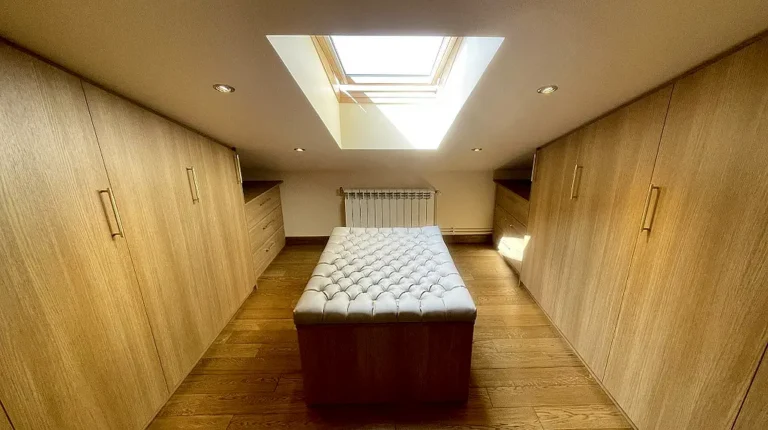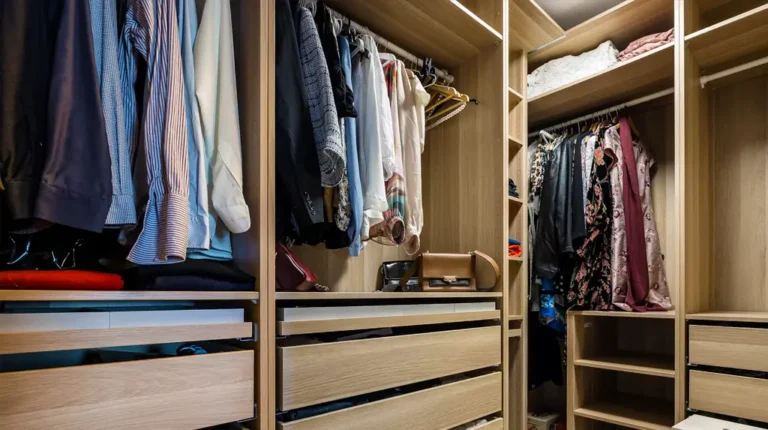In Ireland, if you ask five people what kind of wardrobe they’re looking for, you might get five different answers — even if they’re all talking about the same thing.
Some say slide robes, others call them sliding wardrobes, and a few use fitted units. The names vary, but the idea is similar: storage that fits your space and doesn’t eat into the room.
So, do these terms mean different things? Or is it all just a case of regional habits and marketing?
Let’s break it down.
What People Say vs. What They Mean
The term slide robe is widely used in Ireland — especially by homeowners and local suppliers. You’ll see it in ads, showrooms, and even search trends. Technically, it’s just shorthand for sliding door wardrobe. But it’s not a formal product category.
In contrast, sliding wardrobes is the more accurate and widely recognised term in the UK and across Europe. It refers to any wardrobe that uses a track-based sliding door system instead of hinged doors.
Then there’s fitted wardrobe — a broader term. This includes wardrobes with sliding or hinged doors, built specifically to fit a space. Think wall-to-wall storage in an attic bedroom, or a unit built into a boxed-out corner.
So while the language changes, here’s the reality:
- Slide robe = Local term for a sliding door wardrobe
- Sliding wardrobe = Accurate description of the door type
- Fitted wardrobe = Any built-in wardrobe, sliding or otherwise
The difference isn’t always technical — it’s often just about how people describe things.
Why Naming Matters When You’re Comparing Options
When you’re planning to install a new wardrobe, especially from scratch, it’s important to know what you’re actually asking for.
If you search slide robes Cork, you’ll find a mix of sliding door wardrobes, sometimes fitted, sometimes freestanding. But if you’re after a fully built-in solution — fitted to your exact room measurements — you want a fitted sliding wardrobe, not just a “slide robe”.
This matters when:
- Getting quotes: You want apples-to-apples comparisons
- Discussing storage layout: Internal configuration depends on the style
- Checking installation scope: Fitted units require more planning and prep
Some suppliers sell flat-pack sliding wardrobes marketed as “slide robes” — but these aren’t truly fitted. They’re made in set sizes and won’t use every inch of your space.
It’s the difference between a made-to-measure kitchen and one picked off the shelf.
The Core Benefits of a Fitted Sliding Wardrobe
The best results usually come from combining both ideas: fitted for a seamless look, sliding for space-saving access.
This is where things go from basic storage to something much more efficient. When a sliding wardrobe is fully fitted to your space, you get:
- Full wall-to-wall coverage (no wasted gaps at the top or sides)
- Custom internal layout (shelves, drawers, rails placed where you need them)
- Cleaner look — no dust traps or exposed panels
- Space saved on door clearance, ideal for tight rooms
In homes across Cork, this combination is especially useful. Bedrooms in period homes or new builds with awkward layouts benefit from sliding doors that don’t swing out, and custom fitting that works around radiators, sockets, or angled ceilings.
Slide Systems often builds wardrobes into spaces where flat-pack wouldn’t even be an option. That’s the real value of a proper fitted sliding wardrobe — or whatever name you use for it.
Call It What You Like — Just Make Sure It Fits
Whether you say slide robe or sliding wardrobe, what matters is what you’re getting.
If it’s a fully fitted piece, built to your measurements and made with solid components, the name doesn’t really matter. But if you’re comparing offers or trying to decide between flat-pack and custom, the terminology can make a difference.
Look for clarity when speaking with suppliers. Ask what’s included — is it made to size? Will it be fixed to the wall? Are the doors custom-built or standard panels?
That way, whatever you call it, you’ll end up with something that works, not just something that fits the name.
Ready to transform your space? Let’s get started.





